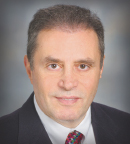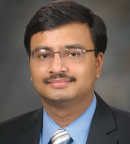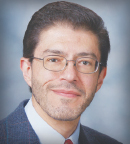The Society of Hematologic Oncology (SOHO) 2024 Annual Meeting showcased several groundbreaking studies in the field of hematologic oncology, including key findings in childhood acute lymphoblastic leukemia (ALL), chronic myeloid leukemia (CML), and chronic lymphocytic leukemia (CLL).

Hagop M. Kantarjian, MD, FASCO,

Nitin Jain, MD
The ASCO Post interviewed two leading experts from The University of Texas MD Anderson Cancer Center in Houston—Hagop M. Kantarjian, MD, FASCO, Professor and Chair of the Department of Leukemia, and Nitin Jain, MD, Professor of Medicine in the Department of Leukemia—who provided valuable insights into three pivotal studies presented at the conference.
Precision Treatment for Childhood ALL

Ching-Hon Pui, MD
The landscape of treatment for childhood ALL is undergoing a significant transformation, as highlighted in a presentation by Ching-Hon Pui, MD, of St. Jude Children’s Research Hospital, Memphis, on precision medicine in childhood ALL.1 Dr. Kantarjian, who moderated the plenary session, provided insights into these advancements, emphasizing the shift toward targeted therapies for both childhood and adult ALL.
As Dr. Kantarjian explained, the current standard treatment for childhood ALL involves an intensive regimen of approximately 10 to 15 chemotherapy drugs administered over 3 years. In controlled trials, this approach to ALL has achieved cure rates of approximately 80% to 90% in children and 40% to 50% in adults. According to Dr. Kantarjian, however, these statistics fail to tell the whole story.
“If you look at the real-world results, many patients in emerging nations and poor geographies abandon the care because the treatment is intensive and prolonged, unlike the more condensed 3- to 12-month chemotherapies in many cancers,” he said. “So, the cure rate in childhood ALL is not realistically 80% to 90%; it’s closer to 40% to 60% because many patients abandon the care.”
This disparity is starkly illustrated by a study of childhood ALL from India that demonstrated a cure rate of 80% to 90% among children who belong to rich families (approximately 5% to 10% of India). However, among children who come from a poor background, which applies to more than half of the population, the cure rate is less than 30%, said Dr. Kantarjian, who underscored the need to develop treatments that are not only effective but also more accessible and tolerable.
Emerging Targeted Therapies
One area of significant progress is in the treatment of Philadelphia chromosome–positive ALL. Historically, these patients received intensive chemotherapy combined with BCR::ABL1 tyrosine kinase inhibitors like imatinib or dasatinib, followed by allogeneic transplantation. This approach has yielded cure rates of about 60% to 70%.
A breakthrough came with the introduction of ponatinib, a third-generation BCR::ABL1 tyrosine kinase inhibitor. Dr. -Kantarjian explained its significance: “Recently, we found that ponatinib was superior to previous tyrosine kinase inhibitors in preventing relapses with the T315I mutation, which was responsible for approximately 75% of treatment failures in patients who experienced disease recurrence.”
Building on this success, researchers combined ponatinib with blinatumomab, a CD19 bispecific T-cell engager. According to Dr. Kantarjian, the results were “remarkable.”
“We presented an update showing that almost all the patients achieved complete remission,” he said. “These remissions were deep, and the estimated 4-year survival rate was close to 90%, which is something we’ve never seen before.” This new approach not only improved survival rates but also reduced the need for intensive treatments. “We eliminated chemotherapy and reduced the need to transplant from approximately 50% down to about 2%,” Dr. Kantarjian added.
For Philadelphia chromosome–negative precursor B-cell ALL, similar advancements are being made by combining reduced chemotherapy with two effective antibodies: blinatumomab and inotuzumab ozogamicin. “At SOHO 2024, presentations showed that combining chemotherapy with these two antibodies in younger ALL patients resulted in an estimated 4-year survival rate exceeding 80%,” Dr. Kantarjian reported.
Dr. Kantarjian explained the shift: “For 40 years, we treated adult ALL with intensive chemotherapy using 15 drugs over 3 years, achieving potential cure rates of 40% to 50%. Now, new regimens combining less chemotherapy with these two antibodies are reducing the need for long, intensive treatment. These new approaches are better tolerated and can be delivered in less than half the time.”
According to Dr. Kantarjian the implications of these advancements are profound. “We are hoping this will be the way for the future,” he concluded. “This new era of precision medicine in ALL treatment offers hope for higher cure rates with less toxicity, potentially bridging the gap in outcomes between different populations and bringing us closer to the goal of high cure rates for all patients with ALL, regardless of their geographic or economic circumstances.”
Asciminib vs Tyrosine Kinase Inhibitor Therapy in CML

Jorge E. Cortés, MD
A randomized study presented by Jorge E. Cortés, MD, of Georgia Cancer Center, Augusta, compared treatment with asciminib, a third-generation BCR::ABL1 tyrosine kinase inhibitor, with tyrosine kinase inhibitors of choice in newly diagnosed Philadelphia chromosome–positive CML.2
As Dr. Kantarjian reported, the study met its primary endpoint, showing a higher rate of major molecular response at 12 months with asciminib compared with any tyrosine kinase inhibitor of choice. However, he noted a crucial limitation: the study did not demonstrate a statistically significantly higher major molecular response rate at 12 months for asciminib compared specifically with second-generation tyrosine kinase inhibitors such as dasatinib, nilotinib, or bosutinib.
According to Dr. Kantarjian, this outcome raises an important question about improving front-line therapy for CML using newer tyrosine kinase inhibitors. Dr. Kantarjian emphasized the need to examine the whole spectrum of front-line therapies and define the critical aims of CML treatment.
Current Landscape of CML Treatment
Dr. Kantarjian outlined the evolution of CML treatments, starting with the first-generation tyrosine kinase inhibitor, imatinib, which is now available generically and costs less than $500 a year. He then discussed second-generation tyrosine kinase inhibitors such as dasatinib, bosutinib, and nilotinib. Although these agents show higher rates of early surrogate endpoints for long-term outcomes, they have not demonstrated improved survival in patients with CML, said Dr. Kantarjian.
As the field of CML treatment matures, new approaches are being explored to address the limitations of current therapies. Dr. Kantarjian highlighted two emerging concepts that are gaining traction in CML treatment.
The first concept involves moving away from using maximum tolerated doses of targeted therapies, which can result in significant toxicities when used long term. Dr. Kantarjian explained that with targeted therapies now being used for multiple years or even a lifetime, the focus is shifting toward using an optimal biologic dose rather than a maximum tolerated dose.
As an example, Dr. Kantarjian cited dasatinib, which is U.S. Food and Drug Administration (FDA)-approved at 100 mg/d but associated with pleural effusions and myelosuppression in some patients. Research has found that halving the dose to 50 mg/d retains the same efficacy while significantly reducing toxicities.
Potential Role for Asciminib
According to Dr. Kantarjian, the introduction of asciminib brings new possibilities and challenges to CML treatment. He outlined four key criteria for adopting a new agent like asciminib in the front-line setting:
- Improved long-term survival. With current 10-year survival rates at 90% to 92%, demonstrating significant improvement in survival is challenging, said Dr. Kantarjian.
- Higher rate of treatment-free remission. “This outcome has not been proven with asciminib yet, and there are no data to suggest the 12-month major molecular response rate would translate into a higher rate of treatment-free remission,” Dr. Kantarjian said.
- Similar or reduced side effects. “With asciminib, the phase I study has a follow-up of approximately 6 years, so we really cannot say that asciminib is less toxic or even equally toxic to the existing tyrosine kinase inhibitors,” Dr. Kantarjian cautioned.
- Good treatment value. Finally, Dr. Kantarjian underscored the importance of cost-effectiveness. “The drug must demonstrate good treatment value, meaning it is not priced over $40,000 a year, which is the cost for a good quality-adjusted life-year,” he said. “However, asciminib is currently priced at about $320,000 a year, presenting a significant barrier to its adoption.”
Dr. Kantarjian concluded by noting that the CML community is actively discussing the requirements for a new drug to become an important front-line therapy. These discussions focus on survival, treatment-free remission rates, long-term side effects, and treatment value and will be crucial in evaluating the phase III study of asciminib vs tyrosine kinase inhibitor of choice, said Dr. Kantarjian.
Lisocabtagene Maraleucel in Relapsed/Refractory CLL

William Wierda, MD, PhD
Dr. Jain provided insights into a post hoc exploratory analysis of the phase I/II TRANSCEND CLL 004 study, presented by William Wierda, MD, PhD, of The University of Texas MD Anderson Cancer Center, Houston.3 This study evaluated lisocabtagene maraleucel, which is currently the only chimeric antigen receptor (CAR) T-cell therapy approved for patients with CLL.
The analysis aimed to identify characteristics associated with response to lisocabtagene maraleucel in patients with relapsed or refractory CLL/small lymphocytic lymphoma. The study focused on 87 patients who received fludarabine and cyclophosphamide for lymphodepletion, followed by lisocabtagene maraleucel at the FDA-approved dose of 100 million CAR T cells.
Among those 87 patients, the rate of complete remission and complete remission with incomplete blood cell count recovery was 18%. The overall response rate was 47%, and the median progression-free survival was 18 months.
The post hoc analysis aimed to identify characteristics correlating with outcomes, particularly overall response rate and complete response rate. The researchers also examined correlations with toxicities based on patient characteristics.
The analysis revealed that baseline genomic characteristics such as IGHV status, deletion 17p status, complex karyotype, and patient age did not significantly influence response rates. “None of these criteria could differentiate between patients who may or may not achieve a response with the CAR T-cell therapy,” Dr. Jain observed.
However, the number of prior therapies emerged as a potential factor. Patients who achieved a response had a median of four prior therapies, compared with six for nonresponders. “The data suggest that less heavily pretreated patients might benefit more from CAR T-cell therapy for CLL,” Dr. Jain said. “This aligns with similar findings we’ve seen with CAR T-cell therapies in ALL and diffuse large B-cell lymphoma.”
The analysis also found a correlation between response rates and low tumor burden. Patients with lymph nodes smaller than 5 cm were more likely to respond compared with those who had bulky disease (lymph nodes ≥ 5 cm). According to Dr. Jain, this finding also aligns with previous observations with CAR T-cell therapies.
In addition, Dr. Jain noted that certain factors were associated with an increased risk of neurotoxicity. These factors included high inflammatory markers at baseline (such as elevated C-reactive protein or ferritin), bulky disease, and lower creatinine clearance.
Limitations and Future Directions
Although the analysis provided valuable insights into factors influencing the efficacy of lisocabtagene maraleucel in CLL, Dr. Jain pointed out several limitations, including the lack of analysis of pretreatment patient/genomic factors and long-term efficacy outcomes such as progression-free survival, lack of analysis of what predicts for cytokine-release syndrome, and missing measurable residual disease analysis. And despite these new insights, Dr. Jain indicated, the findings are unlikely to significantly change clinical practice. Lisocabtagene maraleucel, approved by the FDA in March 2024, remains the only CAR T-cell therapy available for CLL.
“I think we all were hoping that progression-free survival [in TRANSCEND CLL 004] would be more than a year and a half,” Dr. Jain continued. “With half of the patients having disease progression by 18 months, there remains an ongoing unmet need in CLL treatment.”
Dr. Jain emphasized ongoing debates in the CLL community about treatment strategies, particularly comparing CAR T-cell therapy with other approaches such as pirtobrutinib. According to Dr. Jain, future research should focus on developing better CAR T-cell therapy and combining CAR T-cell therapies with other strategies to improve outcomes.
“These findings suggest potential benefits of [lisocabtagene maraleucel] for less heavily pretreated patients and those with lower tumor burden, but they also underscore the complexity of predicting responses to CAR T-cell therapy in CLL,” Dr. Jain concluded. “As the field evolves, ongoing studies exploring improved strategies and combinations will be crucial in addressing the remaining challenges in CLL treatment.”
DISCLOSURE: Dr. Kantarjian has received honoraria from AbbVie, Amgen, Pfizer, Ascentage Pharma Group, Ipsen, KAHR Medical, Novartis, Shenzhen Target Rx, Daiichi Sankyo, and Immunogen; has served as a consultant or advisor for AbbVie; and has received institutional research funding from Amgen, Bristol Myers Squibb, Novartis, AbbVie, Immunogen, Jazz Pharmaceuticals, Ascentage Pharma, and Daiichi Sankyo/Lilly. Dr. Jain has received research funding from Pharmacyclics, AbbVie, Genentech, AstraZeneca, BMS, Pfizer, ADC Therapeutics, Cellectis, Adaptive Biotechnologies, Precision Biosciences, Fate Therapeutics, Kite/Gilead, MingSight, Takeda, Medisix, Loxo Oncology, NovalGen, Dialectic Therapeutics, Newave, Novartis, Carna Biosciences, Sana Biotechnology, and Kisoji Biotechnology; and has participated on advisory boards and received honoraria from Pharmacyclics, Janssen, AbbVie, Genentech, AstraZeneca, BMS, Adaptive Biotechnologies, Kite/Gilead, Precision Biosciences, BeiGene, Cellectis, MEI Pharma, Ipsen, CareDx, MingSight, Autolus, and NovalGen.
REFERENCES
1. Pui CH: Enhancing precision treatment for childhood acute lymphoblastic leukemia. SOHO 2024 Annual Meeting. Presented September 4, 2024.
2. Cortés JE: CML-387: ASC4FIRST, a pivotal phase 3 study of asciminib vs investigator-selected tyrosine kinase inhibitors in newly diagnosed patients with chronic myeloid leukemia: Primary results. SOHO 2024 Annual Meeting. Presented September 5, 2024.
3. Wierda W: CLL-184: Characteristics associated with response to lisocabtagene maraleucel in patients with R/R CLL/SLL: Exploratory analyses from the phase 1/2 TRANSCEND CLL 004 study. SOHO 2024 Annual Meeting. Presented September 5, 2024.

